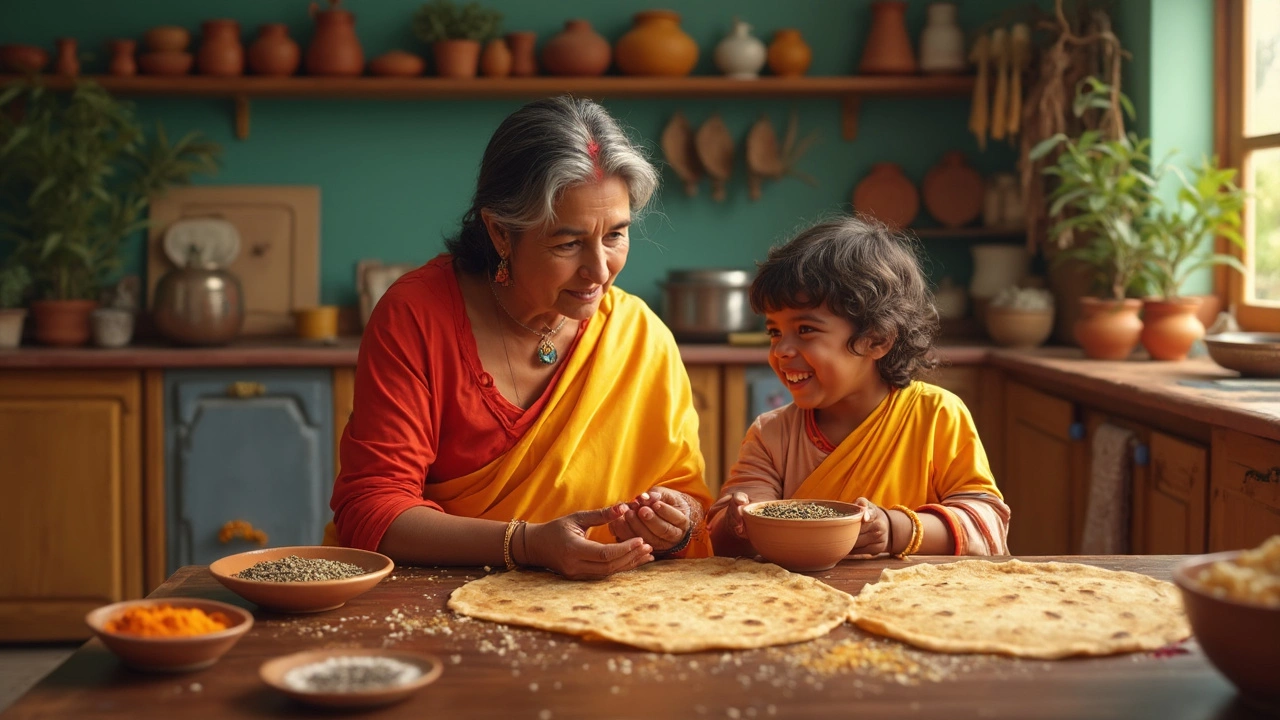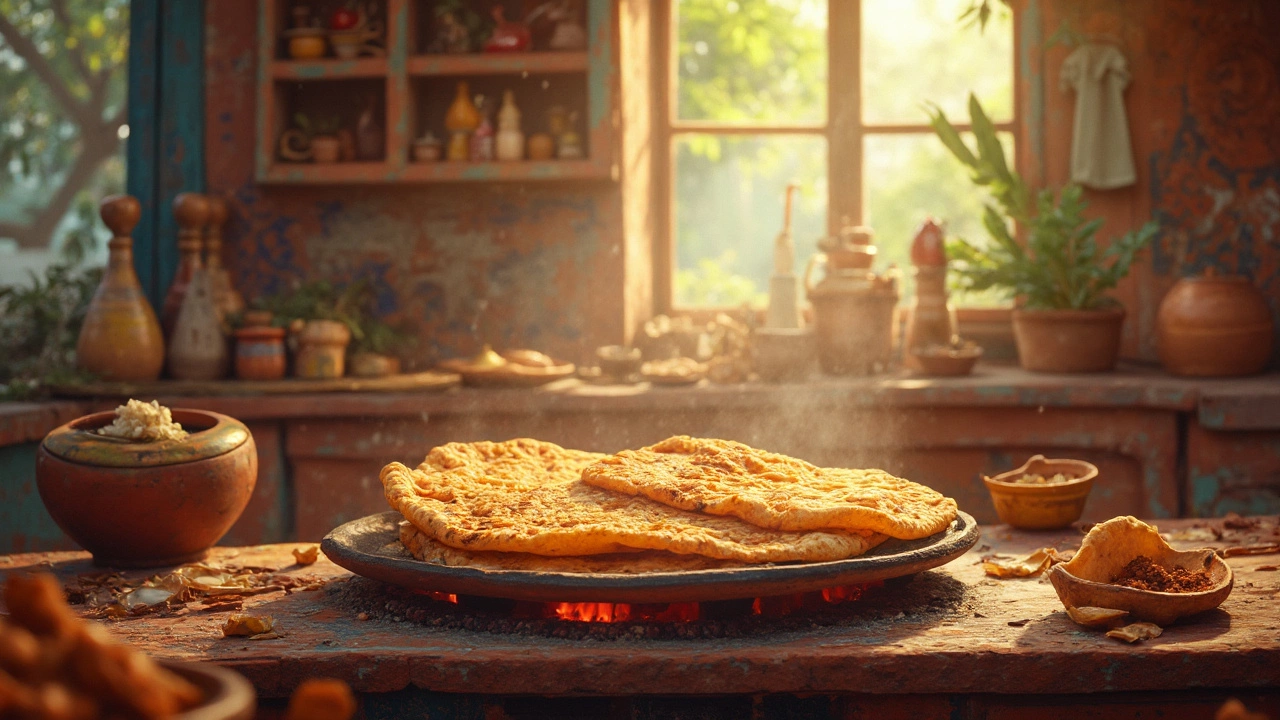Whole Wheat Roti: Soft, Fluffy, and Easy Tips
When working with Whole Wheat Roti, a traditional Indian flatbread made from whole wheat flour. Also known as whole grain chapati, it offers extra fiber and a nutty flavor compared to white‑flour versions. This simple bread sits at the heart of most Indian meals, from breakfast to dinner, and getting it right can change the whole dining experience. Below we break down the key elements that turn a basic dough into a soft, puffed roti you’ll be proud to serve.
Every great Roti Dough, the mixture of whole wheat flour, water, and a pinch of salt follows a few core rules. First, the flour‑to‑water ratio matters more than you think; a slightly wetter dough is easier to roll thin and helps the roti puff up on the hot pan. Second, resting the dough for 15‑30 minutes relaxes the gluten, making rolling smoother and preventing tears. When you combine a well‑hydrated dough with proper rest, you set the stage for a soft, flexible bread that lifts beautifully.
Softness is the hallmark of a good roti, and achieving a Soft Roti, one that stays tender even after cooling hinges on a few tricks. Rolling the dough to an even 5‑6 mm thickness ensures quick cooking without drying out. Cooking on a medium‑high griddle gives the surface a quick sear, trapping steam inside, which is what makes the roti puff. If the heat is too low, the roti dries; too high, and it burns before puffing. A balanced flame, quick flips, and a gentle press with a cloth or spatula create that coveted, airy pocket.
You're not limited to just flour, water, and salt—tiny additions can transform texture. A pinch of Baking Soda, a leavening agent that creates tiny bubbles in the dough makes the roti softer and helps it puff without excessive effort. Use no more than ¼ tsp per kilogram of flour; too much will give a metallic taste and change the flavor profile. Similarly, adding a teaspoon of Oil, usually vegetable or sunflower oil, to the dough at the right stage—just before the final knead—enhances pliability and keeps the finished roti from cracking. Both ingredients are optional, but when used wisely they give you a reliable edge, especially on colder days when dough can be stubborn.
Cooking technique completes the equation. Pre‑heat the tawa until a few drops of water sizzle and evaporate instantly. Place the rolled roti on the surface, let it brown for about 10 seconds, then flip. After the second side shows light brown spots, press gently with a clean kitchen towel; the steam should burst the roti open. If it doesn’t puff, the culprit is often uneven heat or a dough that’s too dry. Adjust by sprinkling a few drops of water on the roti before the final flip—this creates extra steam and encourages puffing. Mastering this quick, tactile process is the difference between a flat cracker and a fluffy, aromatic bread ready to scoop up dal or curry.
Armed with these basics—proper dough hydration, strategic resting, smart additions like baking soda and oil, and the right heat—you’re set to nail whole wheat roti every time. Below, you’ll find a curated collection of articles that dive deeper into each of these tips, troubleshoot common problems, and share creative variations to keep your roti game fresh and delicious.

Whole Wheat Roti vs. Multigrain Roti: Health Benefits Compared
Choosing between whole wheat roti and multigrain roti for a healthier diet involves understanding their nutritional profiles. Explore the calorie content in different roti variants, including those topped with ghee, to make informed dietary choices. Learn which roti might fit best into your lifestyle based on essential nutrients and fiber content.

Roti Calories: Whole Wheat vs. Refined Flour Explained
Choosing between whole wheat and refined flour rotis can be a daily dilemma for many. While they look similar, the calorie content and nutritional benefits differ quite a bit. We'll explore how many calories are in one roti, analyze the calories in one roti with sabzi, and offer tips for making healthier choices. Discover practical insights to make informed dietary decisions without sacrificing your favorite foods.